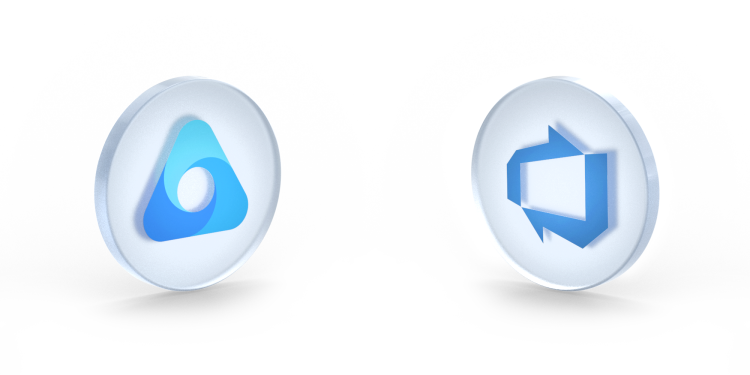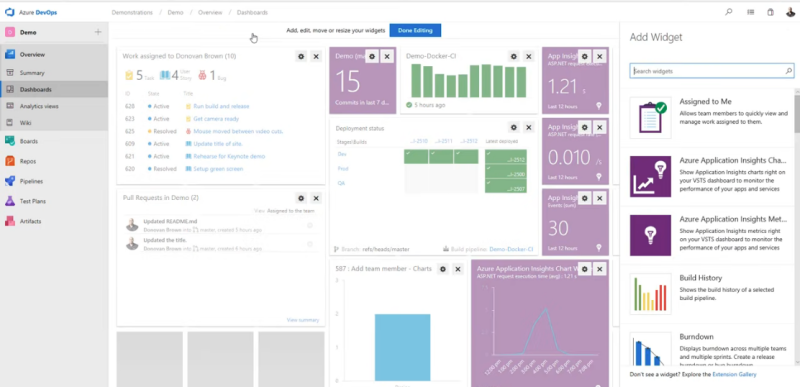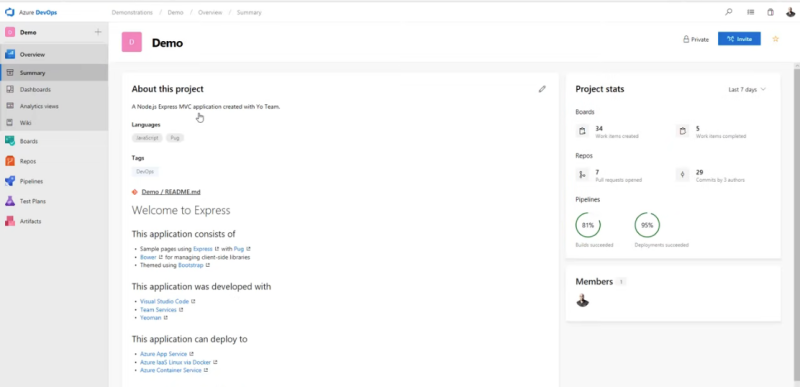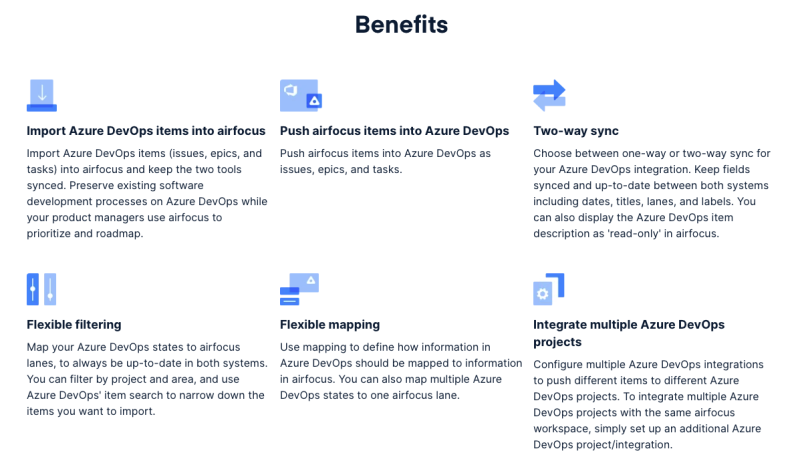Maximizing Sprint Planning Efficiency: How Integration with Azure DevOps Can Elevate Your Product Management Process

Product teams generally rely on agile methodologies to build and ship code with their engineering teams to serve the needs of their customers.
They rely on their tools given that they work so closely with software engineers. But what if there was a way for these tools to assist product teams as well? What if there was a way for the tools that product teams rely on to integrate with engineering tools to achieve higher levels of efficiency, and productivity, streamline processes, and improve strategy and delivery practices?
There is. Azure DevOps.

Introducing: Microsoft Azure
Azure DevOps is a variety of tools and a suite of services that enables teams to plan better, improve collaboration, and ship code faster. The tools and services in this suite include:
Azure Board
Azure Pipeline
Azure Repos
Azure Test Plans
Azure Artifacts
This along with the extensive suite of extensions.
You can use all of their tools for your needs, or a few. Leveraging all of them, however, and even going to the next step of integrating it with your product management tool, provides maximum returns.
Though engineering-heavy, These tools can be leveraged by product teams as well. Especially for sprint planning.

The importance of sprint planning
A sprint refers to a set time that an Agile team will perform work to accomplish a set goal. This period can be any length, with many companies opting for two weeks for example.
Sprint planning is one of the 5 key rituals in Scrum, one of the most important followed agile methodologies.
Sprint planning is easier when you have tools to facilitate the process. And with Azure DevOps product teams can efficiently plan their sprints with their engineering team.
Let’s dive deeper into how Azure DevOps elevates this process.
1. Defining sprint goals
The main purpose of the sprint planning meeting is to define the work that will be performed in the sprint. This includes setting the sprint goal. Once the sprint begins this is where the entire team’s focus and energy are spent.
With Azure Boards teams can define the goal for each sprint, add details, ensure that it’s visible, and track the status.

2. Prioritizing tasks and user stories
When planning a sprint the team determines which tasks and user stories to address to accomplish the goal, factoring in the total effort of the work and the team’s availability.
With Azure DevOps, you can set the team capacity, adjust work accordingly, assign tasks, and report on the capacity for future planning.
3. Assigning tasks to team members
Assigning work clarifies who among the team is working on each item, and likewise who can provide updates in the daily scrum meeting (also known as a stand-up).
Azure DevOps facilitates this with a few simple clicks.

4. Estimating time and effort required
Estimations don’t take place during sprint planning, they should happen prior. Items on the development backlog should constantly be groomed and scored so that they are ready to join a sprint when ready.
5. Reviewing and updating backlog items
Constantly grooming the backlog ensures that the most important items are surfaced at the top.
Azure Board provides a dedicated backlog, sprint boards, and other customizable boards. It also integrates with the entire Azure DevOps suite to manage the process from planning, and testing, to release.
Work can be recorded, scored, assigned, and completed, all while tracked throughout sprints.
Best practices for effective sprint planning with Azure DevOps
Here are four best practices to keep in mind to facilitate the sprint planning process while leveraging Azure DevOps.
1. Collaboration and communication among team members
Accomplishing the sprint goal is a collaborative supportive approach. Team communication is key to supporting this.
Communication in the actual items listed (so there’s a history to track work), but also in the daily stand-ups as well. Teams can communicate with one another in Azure DevOps and their boards can be used to facilitate daily stand-ups.

2. Regular review and adjustment of the sprint plan
Review the sprint progress daily and leverage reports such as the burndown chart or velocity chart. Azure DevOps was built for insights, so you can use it to view the health and status of your projects with its powerful analytics tool and dashboard widget.
And don’t hesitate to adjust your sprint plans where necessary. A sick team member or a severity one bug will impact the amount of work that the team can accomplish.
When the plans change and priorities change, then so should the sprint plan.
3. Integration with other development tools
Why not integrate product tools with engineering tools? This reduces your work as a product leader and enables you to have an end-to-end process from strategy to execution.
airfocus, a strategic and modern product management platform that enables teams to work their way, integrates with Azure DevOps. And it’s a two-way integration!
With this integration, product teams can push epics and features into Azure DevOps and track their state directly in airfocus.
Connect your product management workflows, prioritization frameworks, and roadmaps with day-to-day development by seamlessly syncing your data between the two.
And this is one among other integrations that airfocus and Azure DevOps have to offer.

4. Use templates and automation
Templates are beneficial for setting repeatable processes. Automation is beneficial for removing manual effort for important work. For example, leveraging test scripts to automatically test code prior to release.
Product teams can utilize templates in Azure DevOps for common tasks. Azure Pipelines, used to build, test, and deploy to any platform and cloud. It has multiple automation capabilities for software engineering teams. Especially for automating build and deployments with pipelines so that less time is spent on manual work and running automated tests.
5. Continuous improvement through retrospectives
As you focus on improving your products, focus on improving your processes as well. This is where the retrospective comes in.
The entire Scrum team gathers to discuss performance and uncover areas of improvement. Everyone’s thoughts are welcome. The discussion in this meeting centers around the positive areas, poor points, and required actions for improvement.
Whether opening up Azure Boards during your retrospective to view completed work, leveraging reports, or using an extension such as Team Retrospectives, Azure DevOps facilitates continuous improvement among product and engineering teams.
Conclusion
If you’re leveraging Azure DevOps we hope that this guide has provided some clarity on how to use it to facilitate your sprint planning process, and also shed light on best practices to keep in mind as you work with your engineering team(s).
There is no doubt that most teams want to improve their efficiency and productivity. However, a systematic approach is required to accomplish this along with leveraging the right tools.
Leverage tools that facilitate your processes, streamline your workflows, reduce manual effort, and enable you to produce better-quality code. This can be done when these tools can integrate seamlessly with one another, like airfocus and Azure DevOps. A win for both the product and engineering team for an end-to-end process that starts with strategy and ends with quality delivery.
To learn more about how airfocus can streamline your product management and engineering team’s processes, book a demo with us today!

Quadri Oshibotu

Read also

Experience the new way of doing product management

Experience the new way of doing product management





